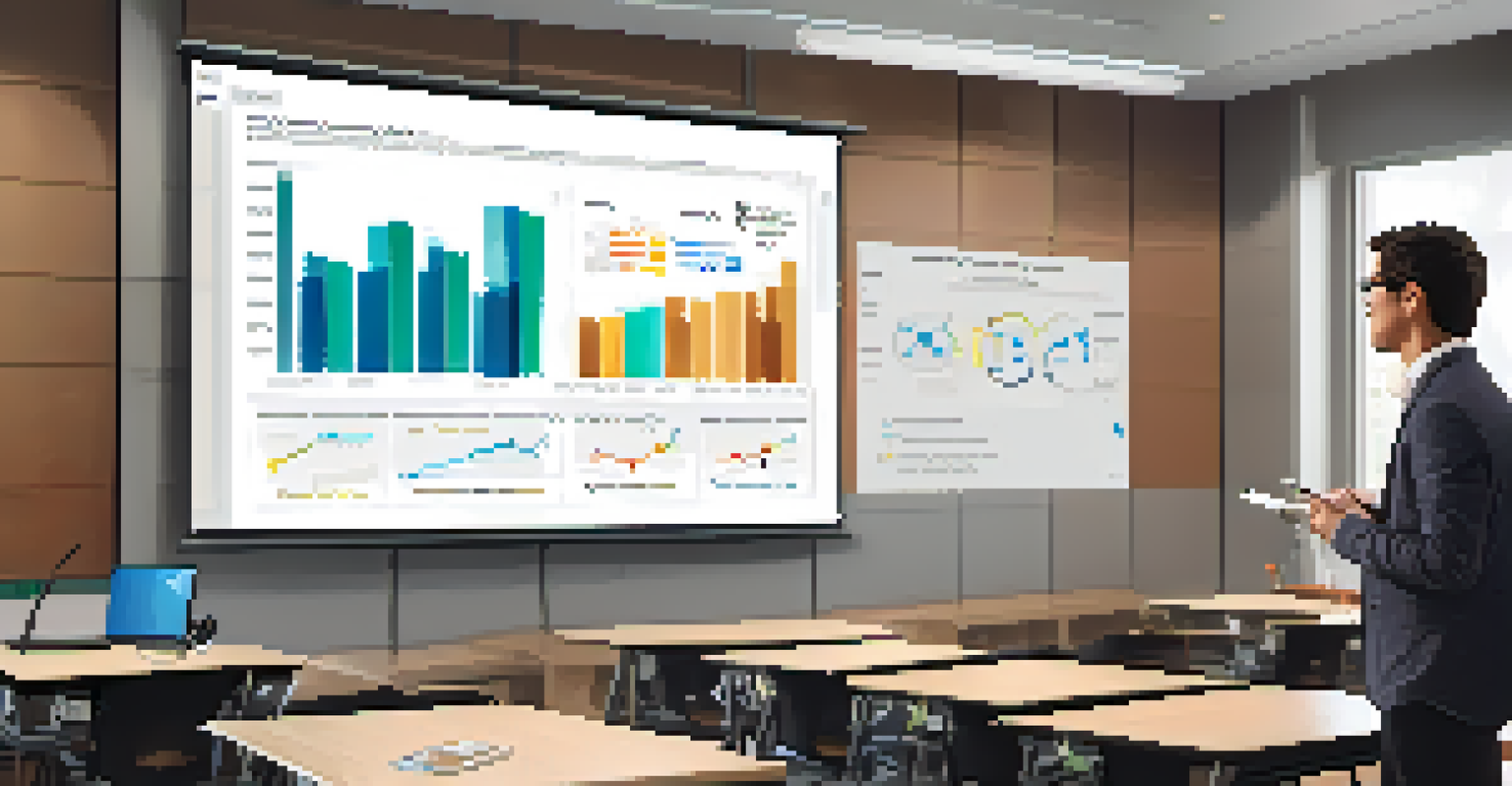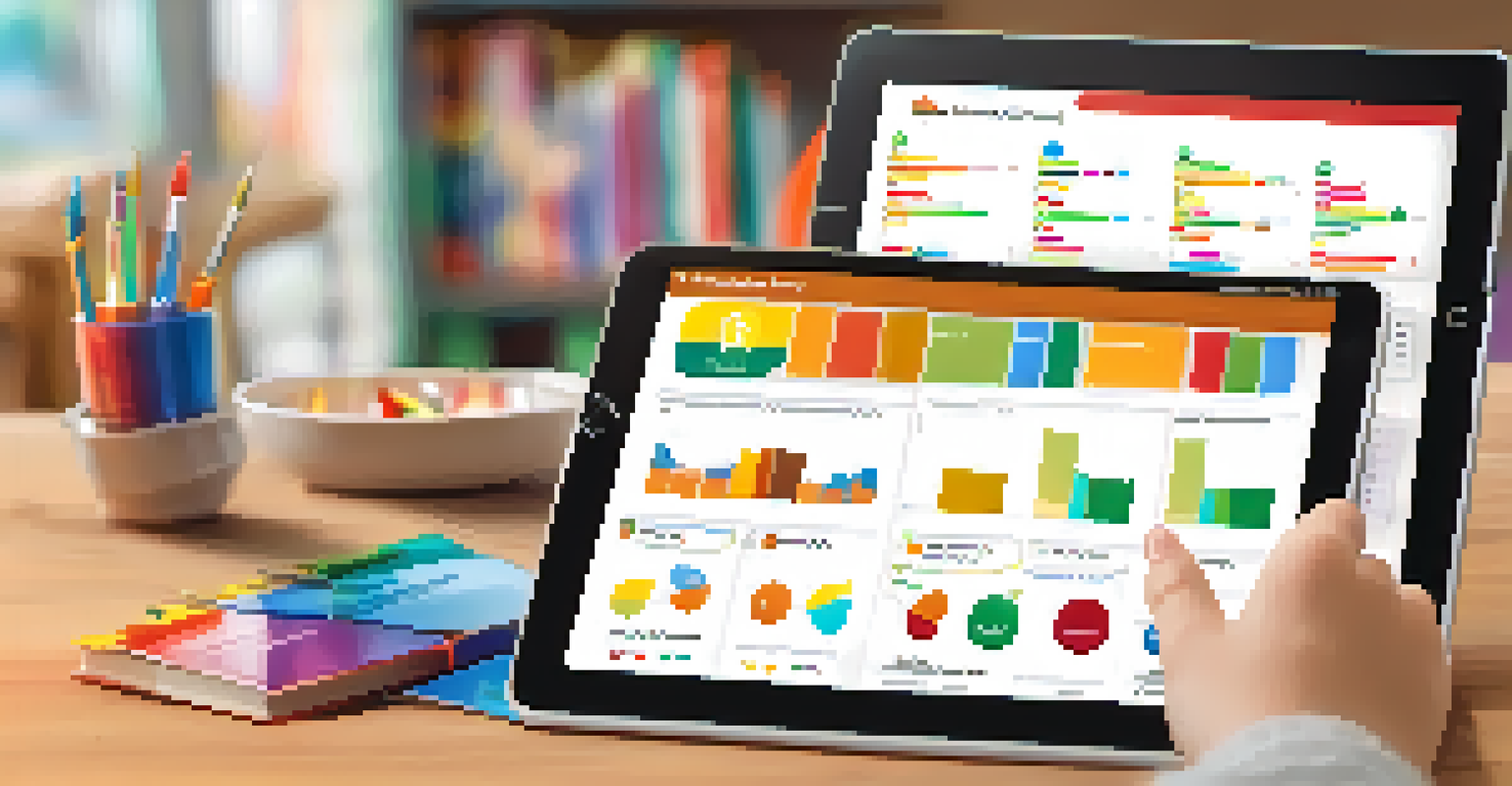Leveraging Learning Analytics for Student Success Stories

Understanding Learning Analytics in Education
Learning analytics involves collecting and analyzing data about students' learning habits and outcomes. It helps educators gain insights into how students engage with course materials, allowing for informed decisions to enhance the learning experience. Think of it as a GPS for education—guiding both teachers and students toward success based on real-time data.
Data is the new oil, and learning analytics is the way to refine it into insights that drive educational success.
By utilizing learning analytics, schools can identify trends, such as which topics students struggle with the most. This data empowers educators to adjust their teaching strategies, ensuring that every learner’s needs are met. Just like a coach studies game footage to improve team performance, teachers can analyze learning patterns to boost student engagement and understanding.
Ultimately, learning analytics serves as a bridge between education and technology, paving the way for personalized learning experiences. This approach not only benefits the individual student but also enriches the overall educational environment. By embracing this data-driven strategy, schools can foster a culture of continuous improvement and success.
The Role of Data in Enhancing Student Engagement
Data plays a crucial role in understanding how students interact with learning materials. By tracking which resources are frequently accessed or which assignments are completed on time, educators can pinpoint areas where students might need additional support. This proactive approach is akin to a gardener monitoring the soil conditions to ensure healthy plant growth.

For example, if data reveals that students are consistently struggling with a particular module, educators can introduce supplementary resources or group discussions to address these challenges. Such adjustments not only help students grasp difficult concepts but also keep them motivated and engaged in their learning journey. It's all about creating an environment where students feel supported and empowered.
Data Personalizes Learning Experiences
Learning analytics tailors education to fit each student's unique needs, enhancing engagement and understanding.
Moreover, engaging students through data means they can take ownership of their learning. Providing them with insights on their performance can inspire self-reflection and goal-setting. When students see their progress visually represented, they’re often more driven to improve, creating a cycle of motivation and achievement.
Personalizing Learning Experiences Through Analytics
One of the most significant benefits of learning analytics is its ability to personalize education. Each student has unique strengths and weaknesses, and analytics helps tailor learning experiences to fit individual needs. Imagine being given a customized fitness plan that targets your specific goals—this is what personalized learning offers students.
The future of education lies in using data to personalize learning, allowing students to thrive in an environment tailored to their unique needs.
With insights from analytics, educators can create differentiated instruction strategies that cater to various learning styles. For instance, a student who excels in visual learning might benefit from video content, while another who prefers hands-on experiences could thrive with interactive activities. This customization not only enhances understanding but also boosts confidence.
Personalized learning goes beyond mere academic improvement; it encourages a deeper connection between students and their studies. By feeling valued and understood, students are more likely to engage actively in their education, leading to better retention and long-term success. In this way, analytics transforms education into a more inclusive and effective process.
Identifying At-Risk Students with Predictive Analytics
Predictive analytics plays a vital role in identifying at-risk students before they fall behind. By analyzing past performance data, educators can forecast which students may struggle in the future. This early detection is similar to a smoke alarm alerting you to potential danger before it escalates.
For example, if a student's attendance drops or their grades begin to slip, predictive analytics can trigger interventions such as personalized tutoring or mentoring. This proactive approach not only supports the individual student but also helps maintain a positive classroom environment. By addressing issues before they become significant barriers, schools can foster a culture of success.
Predictive Analytics Identify Risks
By analyzing performance data, predictive analytics helps educators identify at-risk students early, facilitating timely interventions.
Furthermore, by recognizing patterns among at-risk students, educators can implement school-wide strategies to support all learners. This might include creating programs that promote engagement or addressing common challenges faced by students. Ultimately, predictive analytics empowers educators to take meaningful action that can change a student's trajectory toward success.
Enhancing Collaboration Through Data Sharing
Collaboration among educators, students, and parents is essential for student success, and learning analytics can facilitate this teamwork. By sharing insights and data, all parties can work together to support students’ learning journeys. Think of it as a team sport, where every player understands their role and contributes to the overall goal.
When teachers have access to analytics, they can collaborate to discuss strategies that have worked for different students. This sharing of best practices fosters a community of learning professionals who are committed to student achievement. Additionally, involving parents in the conversation can bridge the gap between home and school, ensuring consistent support for students.
Moreover, collaboration fueled by data can lead to innovative solutions for common challenges. By pooling resources and ideas, educators can create comprehensive strategies that address the diverse needs of their students. This collective effort not only enhances individual student outcomes but also strengthens the educational community as a whole.
Success Stories: Real-Life Examples of Learning Analytics
Many schools have already reaped the benefits of implementing learning analytics, leading to remarkable success stories. For instance, a school district in California utilized analytics to track student engagement and discovered that students were struggling with a specific math curriculum. By adjusting their teaching methods based on data insights, they saw a significant improvement in student performance.
Another inspiring example comes from a high school that used predictive analytics to identify at-risk students. By providing targeted interventions, such as counseling and tutoring, the school was able to reduce dropout rates by over 30%. These success stories highlight the transformative power of learning analytics in fostering student achievement.
Collaboration Enhances Student Success
Sharing insights from learning analytics fosters collaboration among educators, students, and parents, creating a supportive learning environment.
These examples not only showcase the potential of learning analytics but also inspire other educational institutions to adopt similar strategies. When schools embrace data-driven approaches, they create a ripple effect that can significantly impact the future of education. Ultimately, these success stories serve as a testament to the importance of leveraging analytics in the pursuit of student success.
Future Trends in Learning Analytics for Education
As technology continues to evolve, so too will the field of learning analytics. Future trends indicate a growing emphasis on artificial intelligence (AI) and machine learning to process and analyze educational data more effectively. This evolution is much like upgrading from a bicycle to a high-speed train—making the journey smoother and more efficient.
For example, AI can help educators identify learning patterns at a much faster rate, allowing for real-time adjustments to teaching methods. This capability means educators can respond to student needs almost instantly, creating more dynamic and responsive learning environments. As a result, students will benefit from an education that's even more tailored to their individual paths.

Additionally, we can expect an increase in data privacy and ethical considerations surrounding learning analytics. Schools will need to ensure that they protect student information while still leveraging data to enhance learning experiences. Balancing these priorities will be crucial as we move forward, but the potential for positive impact remains immense.